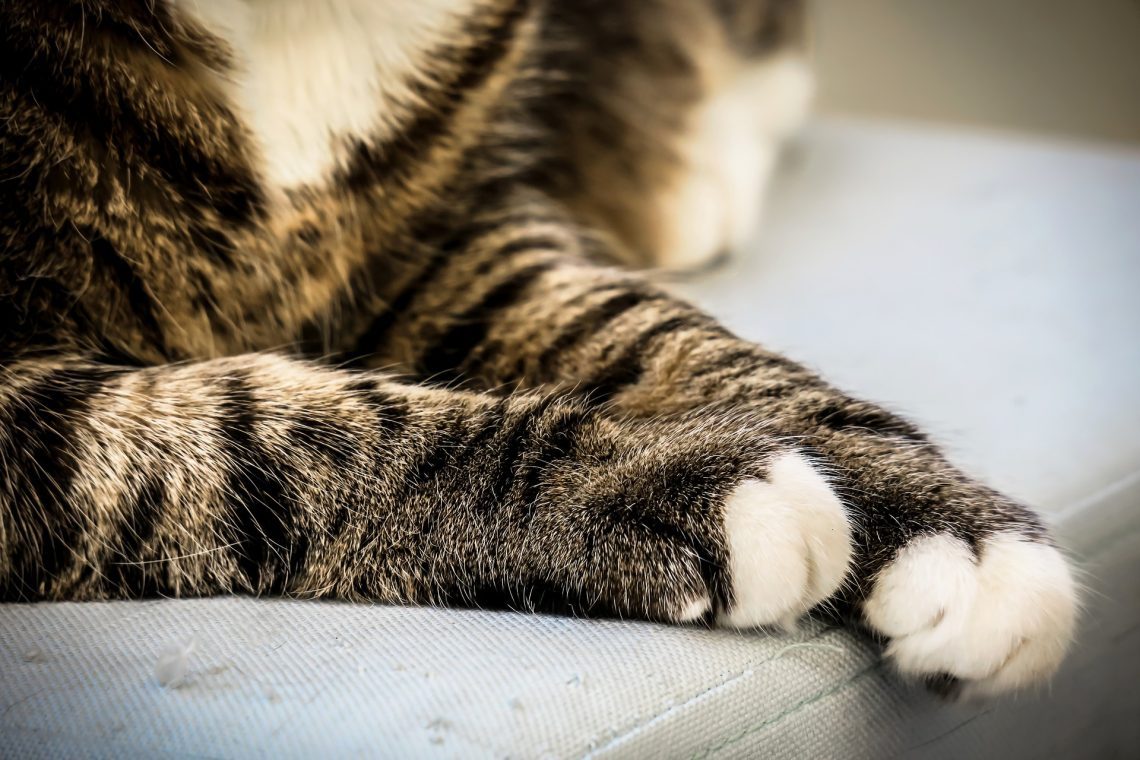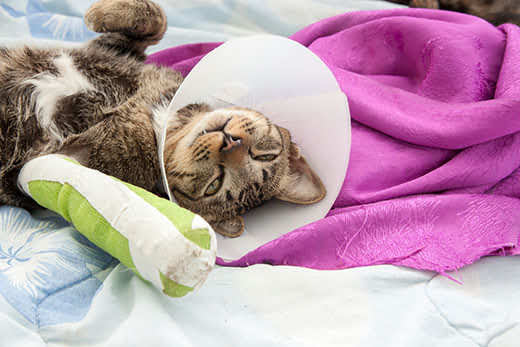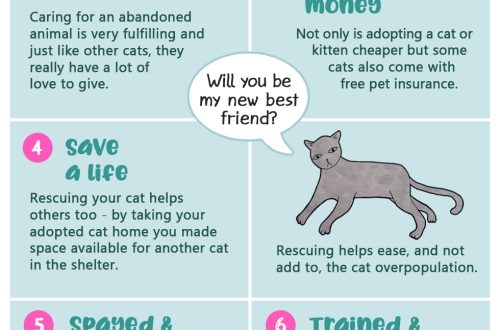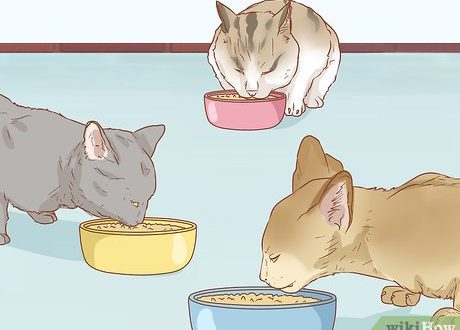
What to do if a cat breaks its paw
Cats tolerate injury and illness so well that even after a fracture, they look normal immediately after the incident. Sometimes street cats look graceful even when their paw is broken. But if a cat’s paw is broken, it won’t heal on its own. These animals are excellent at hiding pain, so it is important to find out in time that the pet is ill. How do you know if a cat’s paw is broken?
A person in this case will be tied to a bed for weeks, but four-legged friends are genetically not so far gone from their wild ancestors. They still have the right biological tools for managing pain. This explains why a cat after a broken paw will continue to hunt and play as if nothing had happened. The recovery process can go almost unnoticed and without any treatment.
Contents
Causes of paw fractures in cats
No matter how trite it may sound, but the main cause of limb fractures in cats is trauma. Common types of injuries include:
- Car collision: This is perhaps the most common cause of fractures in street cats and pets who are used to running away often in search of adventure.
- bite wounds: Bites from dogs and other animals are also a common cause of limb fractures.
- Injuries from bullets and arrows, slingshot or shotgun shells: Projectile impact may cause limb fracture.
- high altitude syndrome: This term is used to describe cat falls from heights, usually from windows, balconies and rooftops. Falls from height often result in broken limbs.
- Household injuries: The presence of a large number of household appliances and furniture can lead to fractures. For example, reclining chairs are a common cause of limb fractures in cats.
There are also non-traumatic reasons why a closed or open fracture of a paw in a cat can occur:
- Poor nutrition: A cat suffering from bone-weakening nutritional deficiencies may be more prone to limb fractures.
- Инфекции: Some infections can affect joint integrity or limb strength, increasing the likelihood of fractures.
- Metabolic disorders: Problems such as diabetes and being overweight are risk factors for fractures.
- Parathyroid diseases: The hormone that regulates the level of minerals in the cat’s body, such as calcium, phosphorus and vitamin D, which play a role in bone formation, is called parathyroid hormone. Deficiency of these minerals can lead to bone abnormalities and increase the risk of fractures.
- Cancer: Cancer-affected bones are more prone to fracture.
To understand whether a cat has broken its paw or not, you need to take into account these factors.
How to understand that a cat has a broken paw
With a broken paw in a cat, a clear sign is severe lameness. Sometimes when walking, the pet may not rely on the damaged limb at all.
The intensity of pain in cats is difficult to assess. Stress hormones partially alleviate pain, and besides, these animals are masterful at hiding pain. This is because in nature any sign of weakness makes them a target for predators.
When a paw is broken in a cat, the following symptoms can be observed: significant swelling, unnatural position of the limb, blood, discoloration of the skin at the site of injury. With an open fracture at the site of injury, the integrity of the skin is disturbed. This can lead to infections if the wound is not treated.
How do you know if a cat has broken its paw? One of the signs may be behavior – animals that have health problems or a broken limb tend to hide. The desire to lie low to give a chance for healing is a survival mechanism. A cat that is usually quite sociable may begin to distance itself or even act aggressively.

Fractured paw in a cat: diagnosis and treatment
It may seem that a fracture of the hind paw in a cat, like the front paw, is easy to diagnose. For the most accurate diagnosis, x-rays are needed, and sometimes sedation. It is usually easy for an experienced veterinarian to identify a fresh fracture by palpation, but there are situations where an untreated fracture in a cat has healed for several weeks before she got to the appointment.
Some fractures are very stable and relatively inconspicuous. That is why, in case of a fracture, experts always recommend taking an x-ray.
Each fracture is unique and requires treatment. How cat paw fractures are treated depends on the severity of the injury and whether the fracture is open or closed. When open, antibiotics and surgery are always indicated.
Limb fractures range from simple, uncomplicated to complex comminuted. In the first case, the bone breaks along one line, and in the second, the fracture leads to the formation of several bone fragments.
A paw fracture in a cat can be displaced or non-displaced. Displaced comminuted fractures often require surgery using plates, pins, or other devices to properly fuse the bone. Simple, non-displaced fractures can heal quickly simply by splinting. The need for surgical intervention and the option of fixing the damaged limb will be determined by the veterinarian when examining the pet.
Except in cases where the fracture has happened a long time ago and has healed well, anesthesia is always recommended. In the short term, pain medications usually include anesthetics and opioids, especially if surgery is required.
In some particularly severe cases, a veterinarian may recommend amputation of the injured limb. If your veterinarian recommends this option, don’t panic: cats are very hardy and will certainly adapt to life without one paw. Very soon, the cat will again become itself, only with some additional restrictions.
If a cat has a broken paw, what to do at home
For optimal healing, it is necessary to limit the pet’s mobility. If a specialist has performed surgery on a cat with a broken paw, suture treatment is necessary. Oral and/or transdermal administration of painkillers and antibiotics may be required.
The pet may need a protective collar and occasional tire changes. In addition, you will have to take the cat to the veterinarian several more times to control healing.
All this may sound quite intimidating, but do not panic – cats recover quickly, both emotionally and physically.
The role of nutrition in limb fractures
Nutrition is critical to keeping cats’ bones in optimal condition. But first of all, it is important for the prevention of fractures. Cats that are deficient in calcium and phosphorus are particularly susceptible to limb fractures.
High-quality balanced nutrition of the pet will help recovery. A cat recovering from an injury should not be subjected to additional stress associated with a change in diet or feeding regimen. Therefore, it is best to establish proper nutrition for your pet from the very beginning.
See also:
Choosing a veterinarian
My cat has a dry nose – is she sick?
The most common cat diseases: symptoms and treatment





